When winter comes, what is the food that you want to eat the most? For us, it is definitely nabe (hotpot)! There are various types of hotpot in Japan but today we want to introduce “Kamo nabe”. “Kamo nabe” is a hot pot dish in which duck is stewed with vegetables such as tofu and green onions, and is a representative local dish of Shiga Prefecture. In the past, they used to catch and cook ducks that flew to Lake Biwa from Siberia.
What is Kamo nabe?
Duck meat (kamo niku) is the main ingredient in Kamo nabe.
Kamo nabe is a stew of duck with tofu, leeks and other vegetables, and local food in Shiga Prefecture.
It used to be made with wild duck, but nowadays it is mostly made with ducklings, which are a cross between duck and domestic duck.
The soup stock is made from chicken and duck broth, kombu (kelp), and bonito, etc. Some add light soy sauce, mirin (sweet cooking sake), and a little sugar, while others use dark soy sauce and warishita for sukiyaki.
Kamo nabe can be cooked in earthenware pots or iron pots. Kamonabe is cooked in earthenware pots or iron pots, with iron pots being used in the eastern and northern parts of Shiga Prefecture, and earthen pots in the western and northern parts.
The duck meat for kamo nabe is sliced as thinly as possible from the breast meat with skin. Overcooking will make it tough, so it is best to eat it when it has quickly changed color. At some restaurants specializing in duck nabe, “kirimi tataki” (tsukune), pounded neck, ribs and cartilage, is included in the duck nabe.
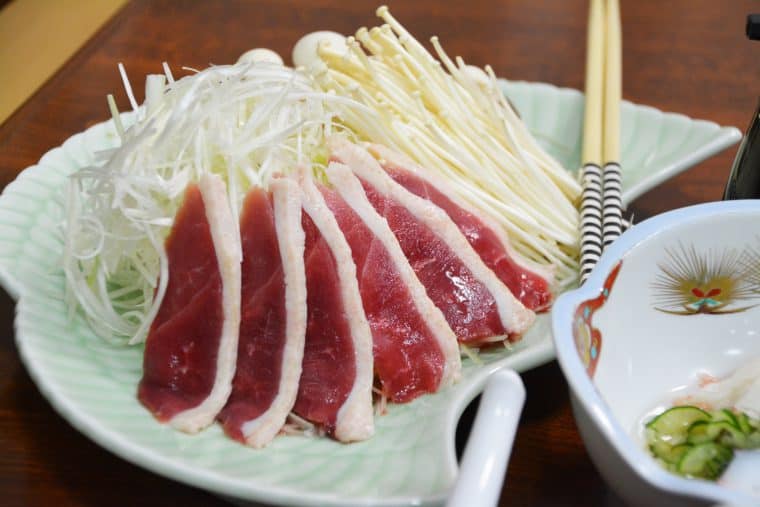
History of Kamo nabe
In the past, kamo nabe was enjoyed during the hunting season from autumn to winter. It was not uncommon to find shotgun shells coming out of the meat of ducks, just like deer and boars.
Nowadays, most of the duck nabe eaten is made from “ducklings,” a cross between a true duck and a duck.
It is not known when duck hot pot was first eaten in Osaka, but there is a record that Toyotomi Hideyoshi encouraged the raising of duck (or ducklings), and there is a theory that ducklings have been raised since the Heian period.
It is said that duck was also eaten as a delicacy during the Tenjin Festival.Later, at the end of the Meiji era (1868-1912), the industrialization of duck raising began, and now duck is used in duck hot pot!
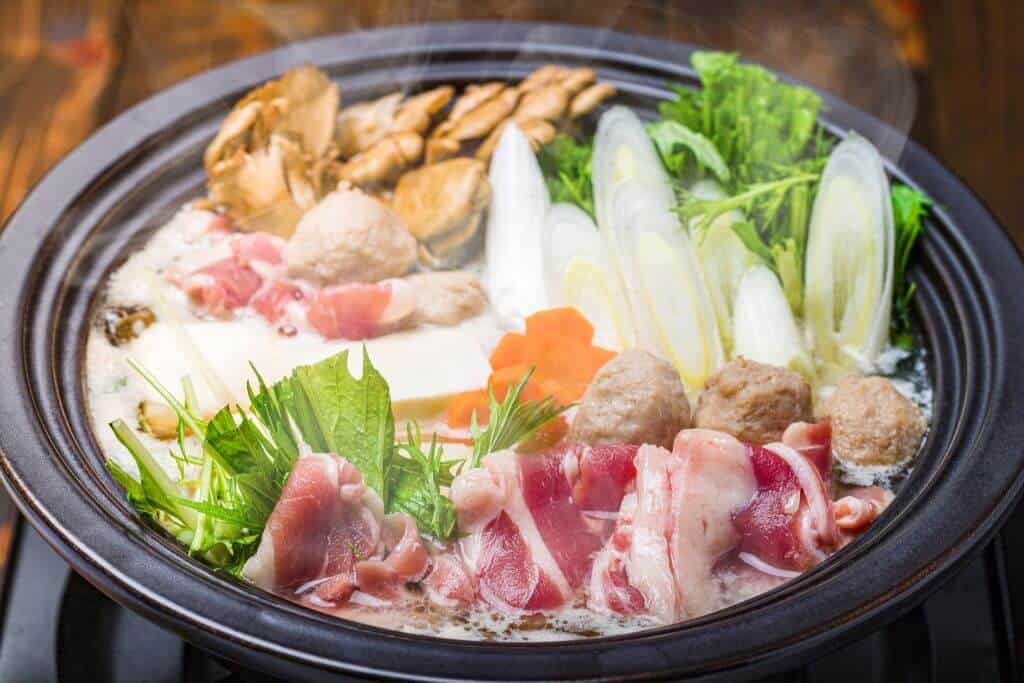
How healthy is Kamonabe?
- Duck meat has been called a rejuvenating healthy meat.
-
The nutrients contained in duck meat are characterized by being richer in vitamins B1, B2 and iron than other meats, and the fat content is unsaturated fatty acids that have beneficial effects on the body and detoxify it.
- Beautiful skin and fatigue recovery effects!
-
The B vitamins contained in duck meat are important vitamins that help regenerate cells and strengthen mucous membranes, thus keeping skin, hair, and nails strong and beautiful. Vitamin B1 converts carbohydrates into energy. Vitamin B2 is used to convert fat into energy. If you don’t have enough of this vitamin, your metabolism will slow down, causing fatigue. Vitamin B2 in particular contains four times as much vitamin B2 as chicken.
- Kamo niku is rich in iron.
-
Duck meat contains six times more than chicken meat. Iron is a nutrient that prevents anemia, but it also plays an important role in collagen production. In other words, iron deficiency causes you to age! Girls who don’t want to have wrinkled, old skin should eat lots of duck.
- Kamo niku has a detoxifying effect.
-
Duck fat is also characterized by a higher content of unsaturated fatty acids compared to other meat fats. Unsaturated fatty acids keep the blood thinner and are good for people with arteriosclerosis and high blood pressure. Incidentally, when the blood is thinner, blood circulation improves and nutrients are able to spread to every corner of the skin.
How to cook Kamo nabe?
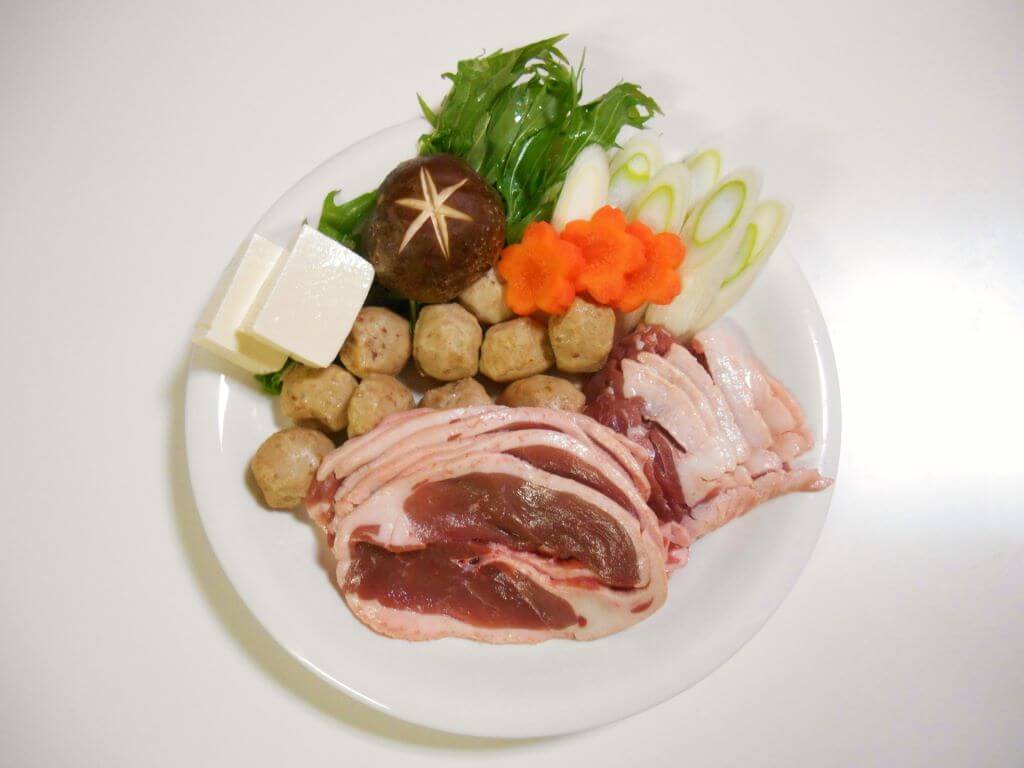
Ingredients of Kamo Nabe
| duck meat | 800g |
| spring onions | 4 bunches |
| celery | 2 bunches |
| grilled tofu | 1 piece |
| eggs | 4 |
| kombu broth | 1,000cc |
| sake | 100cc |
| light soy sauce | 130cc |
| sugar | 100g |
Cooking Steps
Combine kombu broth with sugar, light soy sauce, and sake.
Pour an appropriate amount of step1’s broth into the sukiyaki pot.
Add the duck meat to the boiling broth. Add the duck meat, bite-sized pieces of grilled tofu, konnyaku, spring onions, and water pepper in this order. Finally, arrange the duck meat one by one on top of the spring onions.
When the duck meat changes color, it is ready. Spread the vegetables with the meat and dip them in the egg.
Duck meat becomes tough when fully cooked, so be sure to serve it rare.

How much does it cost to eat to Kamo nabe?
How much does it cost to eat duck hot pot at a restaurant?
The price varies depending on the duck meat used and the restaurant, but a typical restaurant will charge between about 2,500 yen and 6,000 yen for one or two servings. However, if you go to a high-class restaurant, the price will exceed 10,000 yen, but the atmosphere, history, duck meat, and customer service will be excellent.
Recommended Restaurant for Kamonabe
Nayamago (納屋孫)
Nayamago is a ryotei with a long history dating back to the Edo period. It is a traditional Japanese restaurant that has been around since the Edo period.
The exterior and interior of Nayamago is a quaint and historic restaurant where you can enjoy a delicious duck hot pot in a relaxed atmosphere.
Sumimoto (住茂登)
Sumimoto is a traditional Japanese restaurant that has been in business for 130 years. We focus on fish from Lake Biwa and seasonal ingredients.Sumimoto’s Kamo nabe, a winter specialty, is made from wild duck, and Sumitomo offers Kamonabe for just 2999 yen per person.The restaurant also offers a course to fully enjoy Kamo niku, which is a great way to enjoy it.
Oume Yamashiroya (青梅 山城屋)
Oume Yamashiroya is a traditional Japanese house-style restaurant with a nice atmosphere that reminds you of the Showa era. There is also a balcony where you can see the Tokyo Sky Tree if the weather is nice.
Kamo nabe starts at 2,600 yen for one or two people.
Conclusion
Kamo nabe is available at many restaurants only during the colder months, but kamo nabe is a highly recommended nabe dish that is different from those made with beef or pork.
Kamo nabe is one of those nabe dishes that you should try at least once in winter.
There are many different kinds of nabe dishes in Japan, so if you are interested in learning more about other nabe dishes besides kamo nabe, please check out this page.

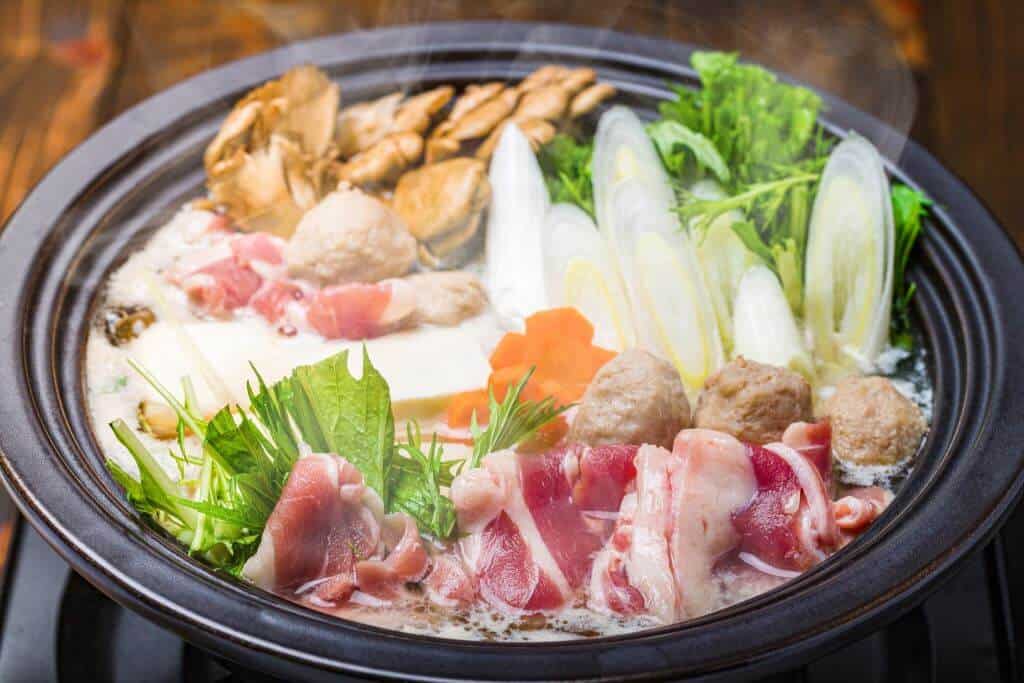
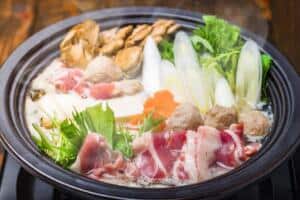
Comments